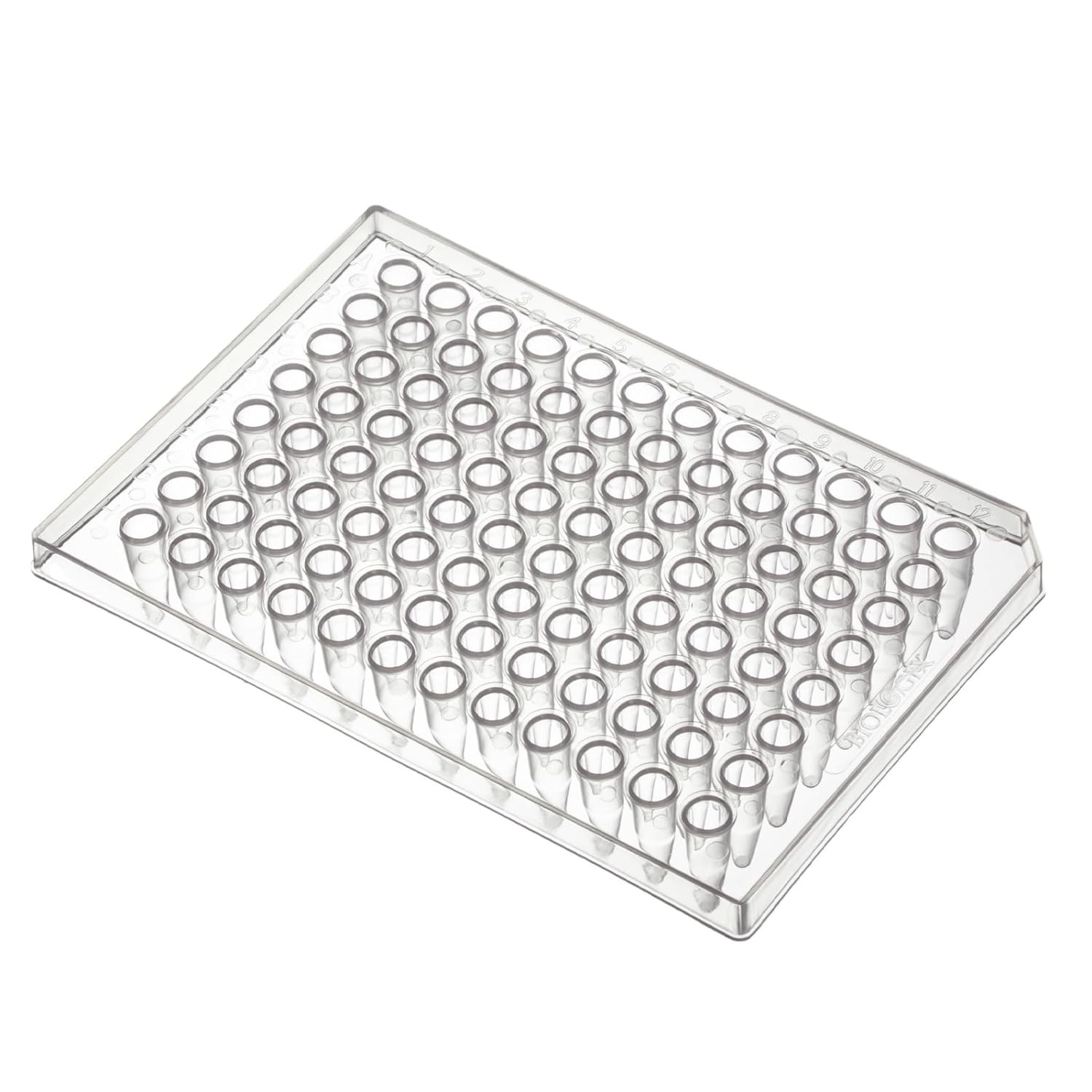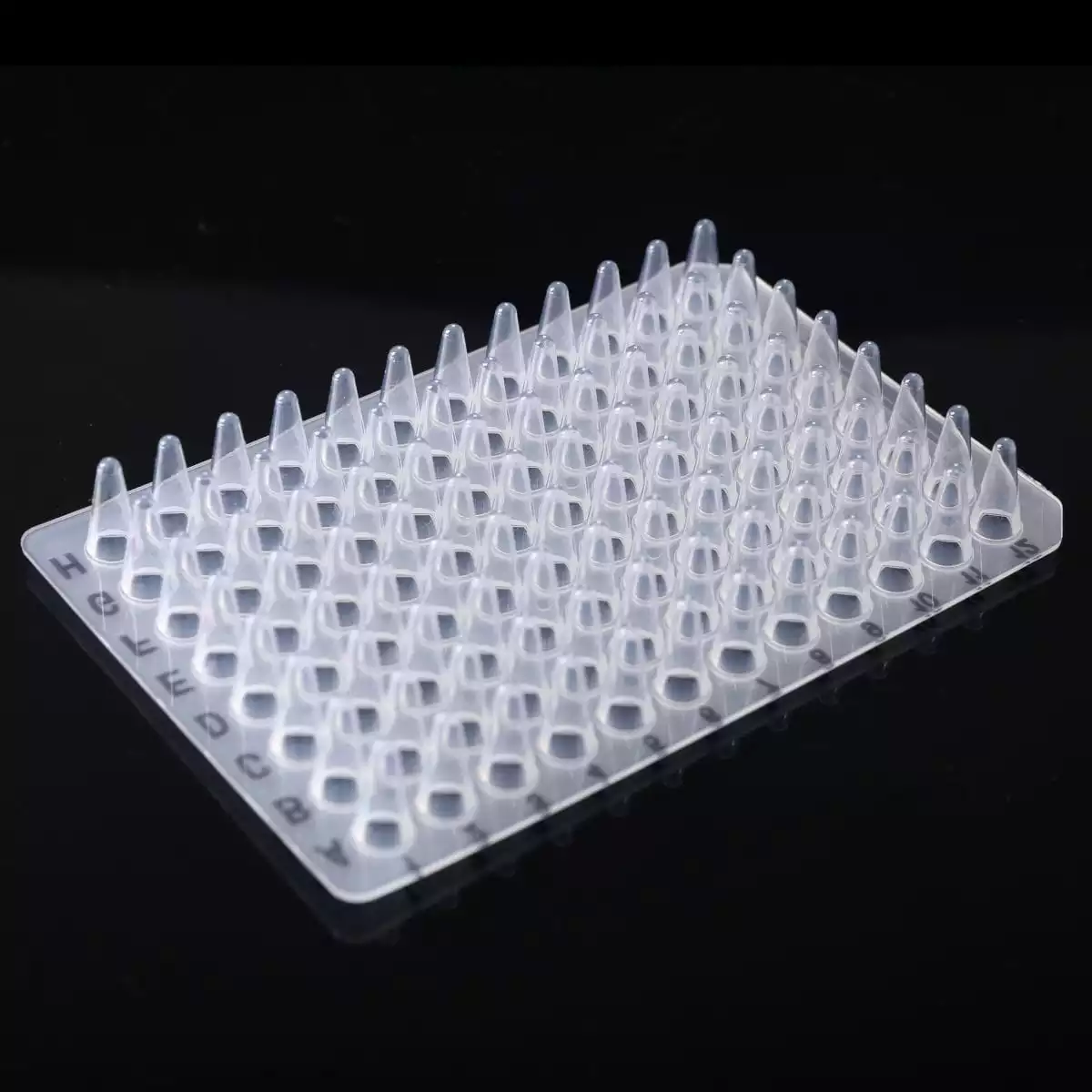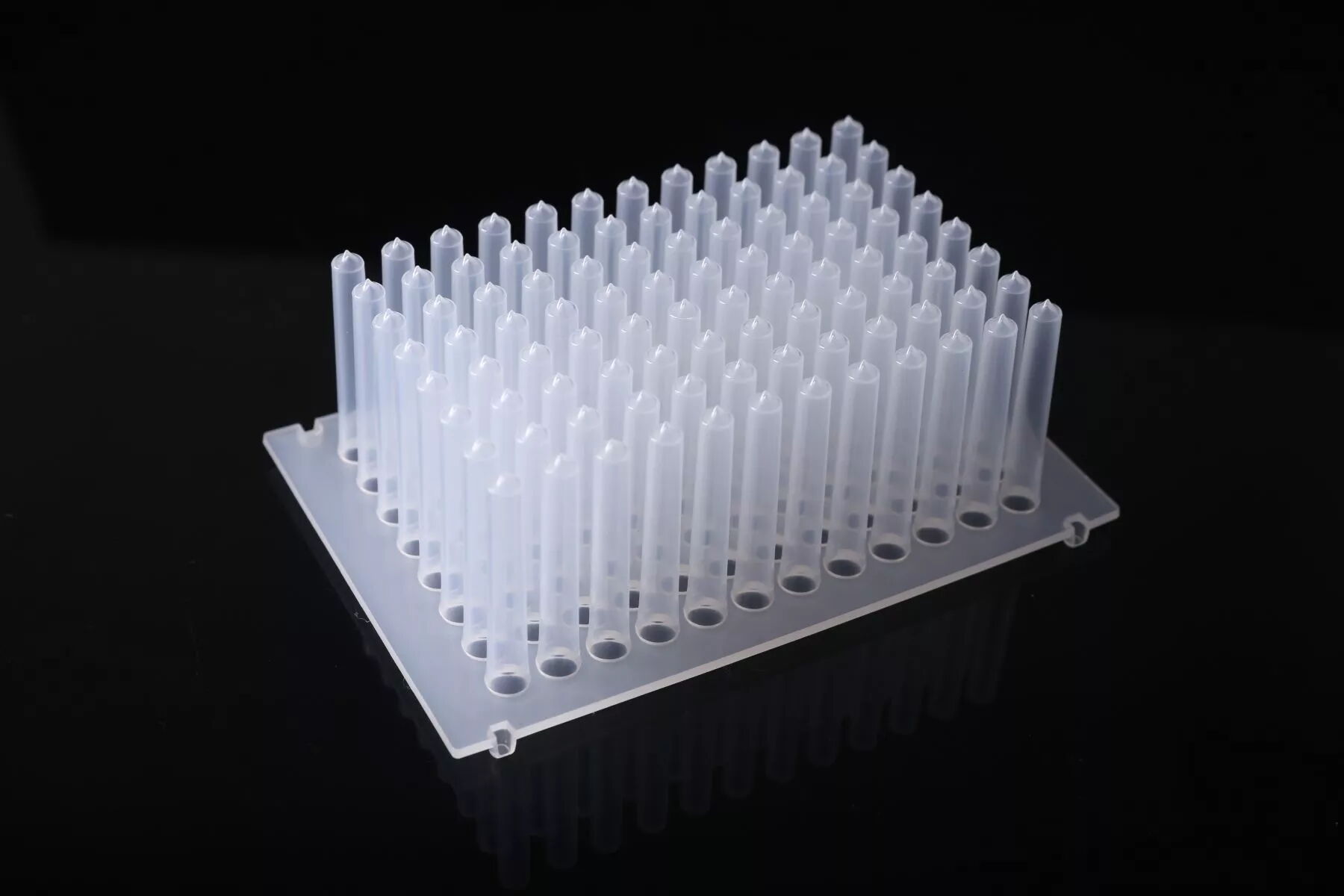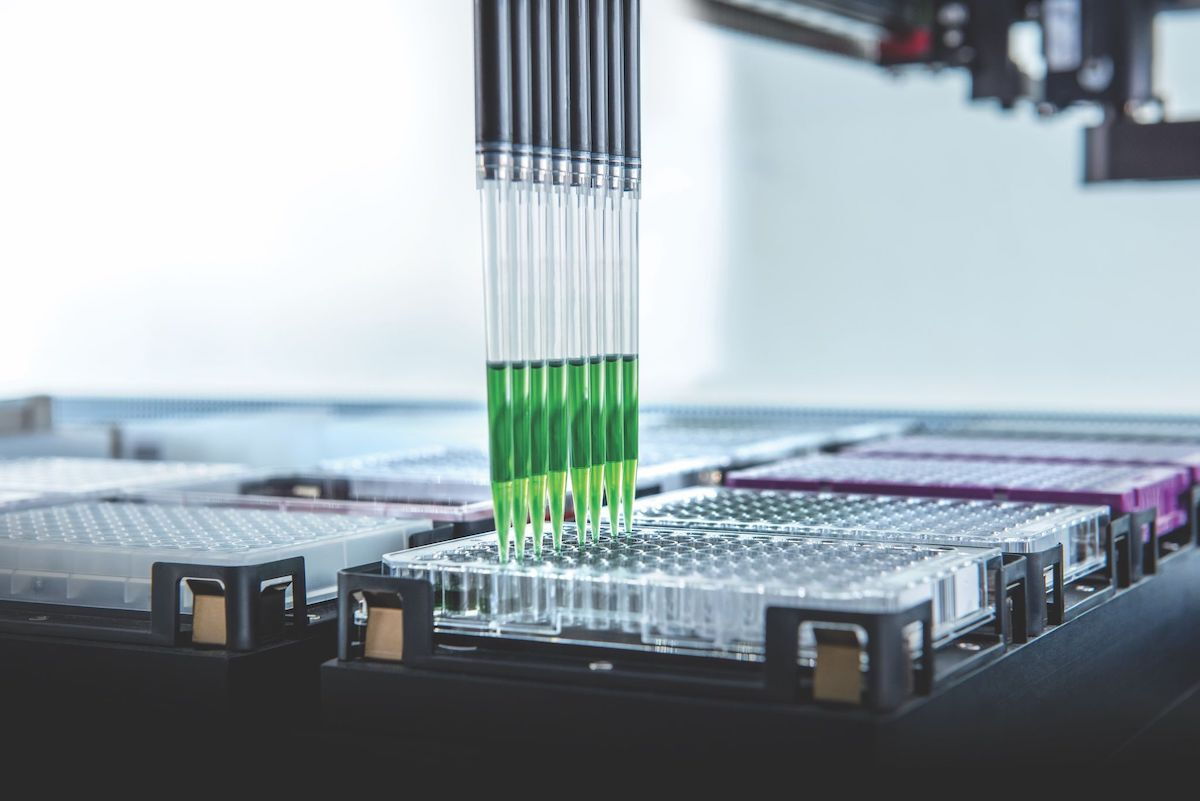How to Select Various Styles of PCR Plates
Dec 15, 2023
Today, let's delve into the considerations when selecting reaction plates for PCR consumables. PCR plates typically come in 96-well and 384-well formats, with 24-well and 48-well options as well. The choice of PCR plates depends on the type of PCR instrument used and the nature of the specific application.
-
Skirt Design
The "skirt" of a PCR plate refers to the material around the plate. Skirts provide better stability during pipetting processes in reaction setup and offer improved mechanical strength during automated handling. PCR plates can be categorized into no skirt, half-skirt, and full skirt designs. No skirt plates lack material around the perimeter and are suitable for most PCR and real-time PCR instruments. Half-skirt plates have short edges around the perimeter, providing ample support during pipetting. Full skirt plates have edges covering the height of the plate, which is beneficial for PCR instruments with protruding modules, aiding secure and stable adaptation. Full skirts also enhance mechanical strength, making them ideal for automated workflows with robotic platforms.


-
Plate Surface
The surface of the plate refers to its top side. A flat surface design is suitable for most PCR instruments, facilitating easy sealing and handling. Raised edge plate designs provide optimal compatibility with certain PCR instruments, assisting in balancing thermal lid pressure without the need for adapters, ensuring optimal heat transfer and reliable experimental results. -
Color
PCR plates are often available in various colors for visual sample differentiation, especially in high-throughput experiments. While the color of the plastic does not impact DNA amplification, in real-time quantitative PCR (qPCR) reactions, white or frosted plastic is recommended over transparent materials for sensitive and accurate fluorescence detection. White plastic enhances qPCR data sensitivity and consistency by minimizing fluorescence refraction out of the tube. When refraction is minimized, more signal is reflected back to the detector, increasing the signal-to-noise ratio. Moreover, white tube walls prevent fluorescence signal transfer to the PCR instrument module, avoiding absorption or inconsistent reflection of fluorescence signals, thereby minimizing variations in repeated experiments. Different instruments may have different fluorescence detector positions, so refer to the manufacturer's recommended consumables. Typically, for Applied Biosystems PCR instruments, we recommend using the original frosted-hole PCR plates developed and rigorously tested to ensure accurate and reliable experimental data. -
Profile
The profile of a PCR plate refers to its height, with "low profile" indicating a lower height. Low-profile consumables with a shorter design minimize the space above the reaction system, reducing the impact of evaporation and improving heat conduction efficiency. Therefore, when compatible, low-profile consumables, also known as "fast" plates or short plates, are recommended for efficient heat transfer. -
Corner Cut
Corner cut refers to a missing corner on a PCR plate, depending on the instrument that needs to be adapted. The cut corner may be located at positions H1, H12, or A12 for a 96-well plate or A24 for a 384-well plate. -
Well Edge
A common feature of PCR plates is a raised edge around each well, aiding in sealing with a sealing membrane to prevent evaporation. -
Labeling
Alphanumeric labeling on PCR plates helps identify individual wells and corresponding sample positions. Typically, raised letters and numbers in white or black aid visibility. -
Divisible Plates
Some 96-well PCR plates are designed to be divisible. This design allows a whole 96-well plate to be easily divided into smaller plates, reducing consumable waste and lowering costs when the entire plate is not needed. The most common divisible design is with 24-well divisions, but 32-well and 8-well divisions also provide convenience and flexibility.
Previous: Key Considerations in PCR Experiments
Next: Top Ten Techniques for Effective Pipetting



